1. Sears: A Household Name
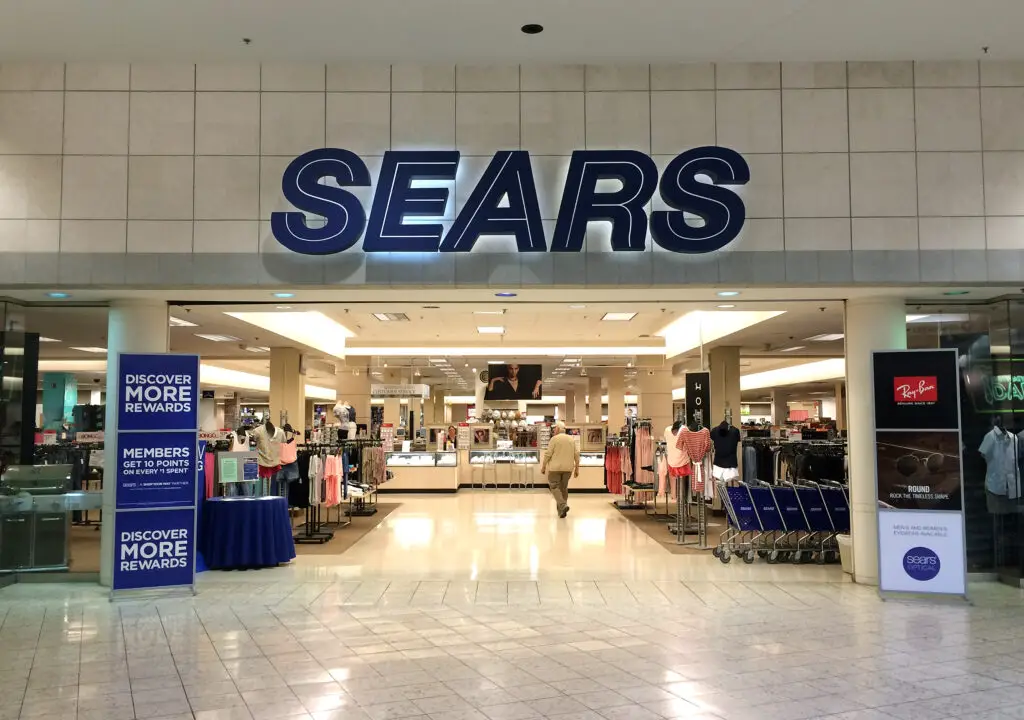
Sears was once one of the largest and most well-known retailers in the United States, offering everything from clothing and appliances to tools and home goods. For decades, it was a staple of American shopping culture, with the iconic Sears catalog serving as a lifeline for many families. Whether it was buying a new refrigerator or ordering the latest fashions, Sears was the place to go for quality and variety. However, the company failed to keep up with the rise of online shopping and the changing retail landscape. As a result, Sears suffered from declining sales and eventually filed for bankruptcy.
Despite its troubles, Sears still has a loyal following. The brand’s legacy in American retail is undeniable, and there’s potential for it to make a comeback by embracing the digital age. Sears could revive its catalog model, offering online shopping with personalized recommendations and a focus on customer service. Additionally, the company could tap into the growing demand for sustainable and locally sourced products, positioning itself as a more environmentally conscious option. By revamping its image and focusing on what made it great, Sears could become relevant again and reclaim its spot in the retail world.
2. Polaroid: A Snapshot of Nostalgia

Polaroid was once synonymous with instant photography, capturing memories in the blink of an eye. In the ’80s and ’90s, the brand was a household name, with people eager to take instant photos at family gatherings, vacations, and even casual moments. The thrill of watching a picture develop right before your eyes was something that made Polaroid feel magical. Yet, the company failed to adapt to the rise of digital cameras and smartphones, which ultimately led to its decline. While Polaroid tried to make a comeback with new instant cameras, it was no longer the king of the photography world. But there’s still hope. Polaroid has a loyal fan base, and there’s an undeniable sense of nostalgia tied to its name according to HISTORY. With the resurgence of vintage and analog trends, Polaroid could make a real comeback by focusing on its retro charm while also embracing digital technology. People love the tactile experience of holding a physical photo, and there’s room for the brand to innovate in this space. A blend of the past and future could be exactly what Polaroid needs to reclaim its spot in the spotlight.
If Polaroid reintroduced some of its classic products with a modern twist, it could easily capitalize on the current desire for authentic experiences. Think instant photos with a smartphone app that enhances creativity, or a revival of the iconic Polaroid Originals line with upgraded technology. The brand could also tap into a younger audience by partnering with influencers who love vintage aesthetics. There’s something undeniably cool about Polaroid, and in a world that craves authenticity and unique experiences, a resurgence could be just the thing for the company. The brand’s history is rich, and its potential is still there. Polaroid was more than just a camera; it was a part of culture. So, while it may have faded into the background for a while, it certainly deserves another chance to shine.
3. Blockbuster: The King of Movie Rentals
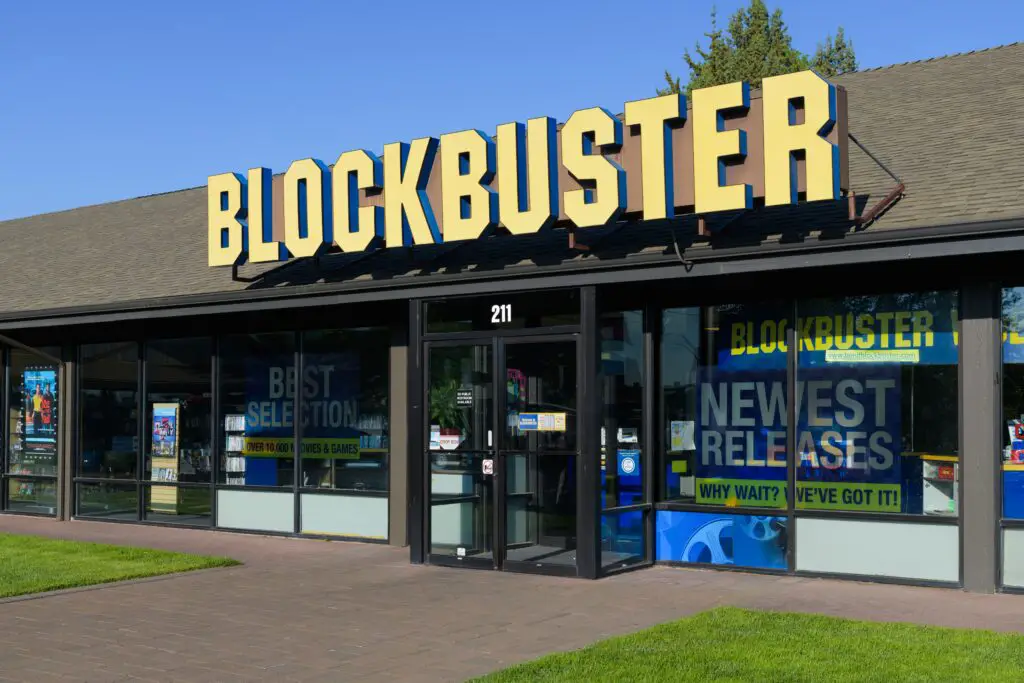
Blockbuster was the place where movie lovers would spend hours browsing for their weekend entertainment. In the late ’90s and early 2000s, it was the go-to destination for VHS tapes, DVDs, and later Blu-rays. People remember the thrill of walking through aisles filled with new releases and the anticipation of scoring the last copy of a popular movie. Blockbuster’s blue-and-yellow logo was everywhere, and its stores became iconic hangout spots for those who wanted a night in. However, Blockbuster was caught off guard when digital streaming services like Netflix and Hulu began to dominate the scene. In just a few short years, the once-giant company began to lose its footing and closed thousands of stores says AdWeek.
But that doesn’t mean it’s the end for Blockbuster. There’s still a sense of nostalgia tied to those visits to the local store, and people remember how special it was to pick out a film in person. With the rise of digital streaming, people may also be yearning for the more tangible experience of physically choosing a movie. Blockbuster could easily tap into this craving by offering exclusive content or events, perhaps even partnering with streaming platforms for a hybrid model. Imagine a small, updated Blockbuster store where people can browse DVDs, pick up snacks, and enjoy a retro movie experience with modern-day perks. A reimagined version of Blockbuster could capture the essence of what made it great while blending the convenience of today’s digital world. It could be a fun escape from the ever-present online streaming options that dominate the market.
4. Toys “R” Us: A Playful Comeback
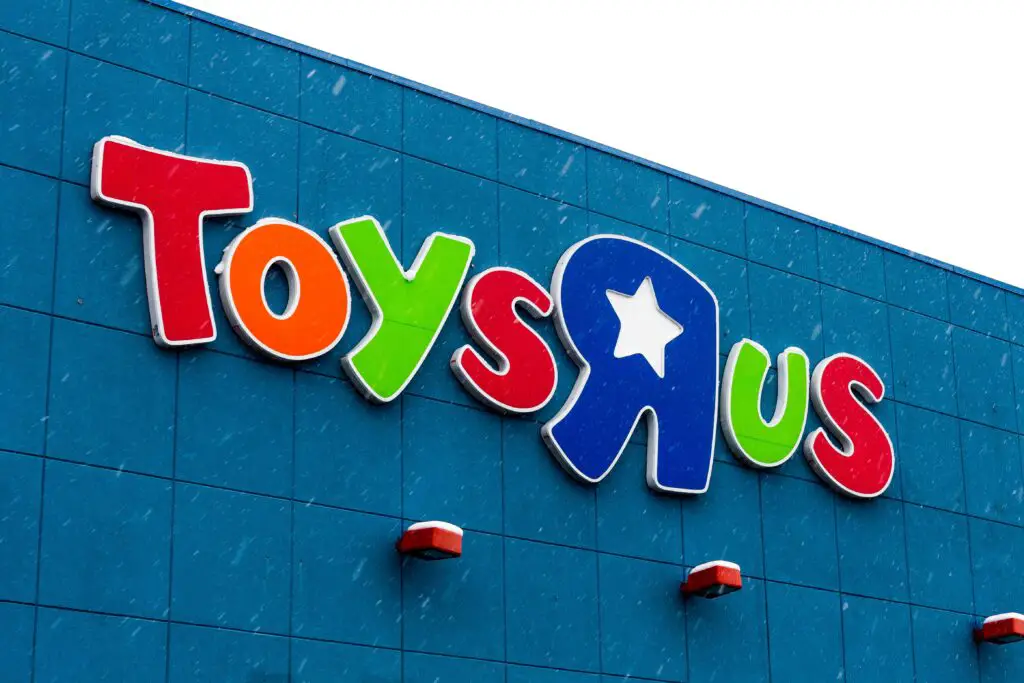
Toys “R” Us was the ultimate childhood destination for anyone looking to score the latest action figures, dolls, or board games. The brand enjoyed decades of success and became a favorite among kids and parents alike. Who could forget the iconic Geoffrey the Giraffe, the store mascot that became a symbol of joy and excitement? The toy store was the place where families would go on weekends to explore aisles filled with endless toys. Unfortunately, with the rise of e-commerce and the decline in foot traffic at malls, Toys “R” Us faced an uphill battle. Their failure to adapt to the digital age, along with increasing competition from stores like Walmart and Target, led to its eventual downfall. But despite its struggles, the brand’s name still carries weight in the world of toys says NBC 5 Chicago.
In today’s market, there’s still a desire for tangible, in-person shopping experiences—especially for kids who want to engage with the toys they’re thinking about purchasing. Toys “R” Us could easily regain its place by focusing on creating an immersive shopping experience that’s tailored to the needs of modern-day families. Think interactive in-store play zones, partnerships with top toy brands, and exclusive toys that can only be found at Toys “R” Us. With the resurgence of toy collecting, nostalgia for vintage toys, and the continuing importance of play in childhood development, there’s room for the brand to find success again. If the store reimagines itself as an interactive wonderland that caters to the digital generation while celebrating its history, it could easily reclaim the spotlight.
5. RadioShack: The Electronic Pioneer
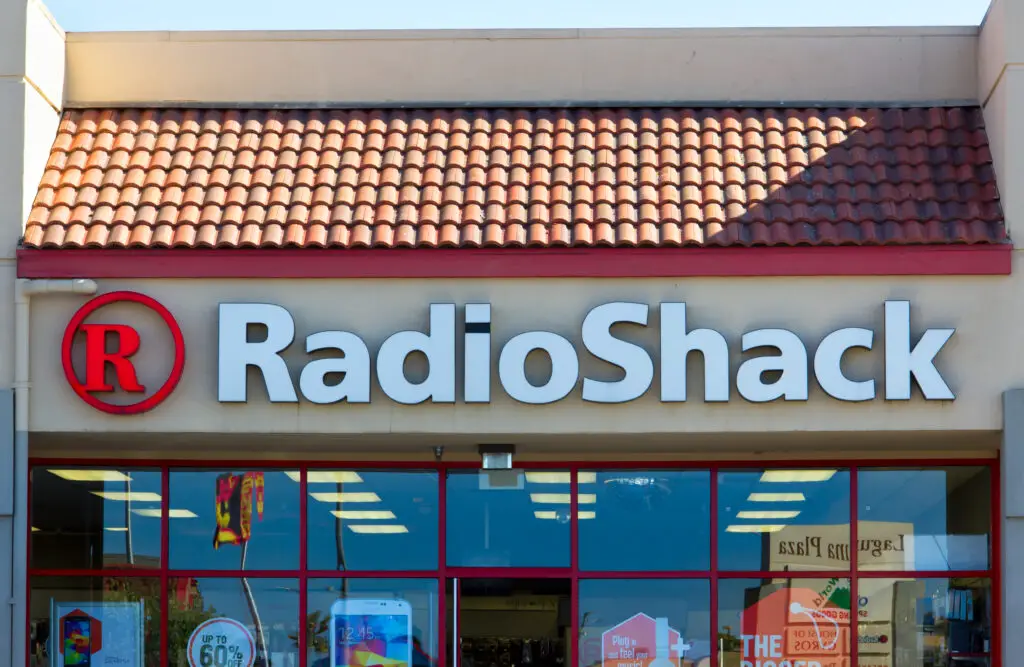
RadioShack used to be the go-to place for electronics, from cables and batteries to computers and phones. In the 1980s and ’90s, it was the store where tech enthusiasts could find everything they needed to build their gadgets or fix their broken devices. RadioShack was more than just a store; it was a tech haven, offering a wide range of products for the DIYer or hobbyist. However, the company struggled to keep up with the rapid advances in technology, and as big-box stores like Best Buy and online retailers like Amazon grew, RadioShack lost its edge. The brand eventually filed for bankruptcy, but its loyal following remains explains CES.
Today, there’s a growing interest in electronics and gadgets that cater to a more hands-on approach. RadioShack could easily capitalize on this trend by positioning itself as a place where people can find unique, customizable tech products and accessories. With the rise of maker culture and a renewed interest in DIY electronics, the brand could provide a space for creators to gather, share ideas, and get the parts they need for their projects. Imagine a RadioShack that embraces both its retro appeal and modern tech innovations, offering workshops, tutorials, and a community-driven approach to tech. This combination of nostalgia and innovation could be exactly what the brand needs to make a comeback.
6. Circuit City: The Tech Giant
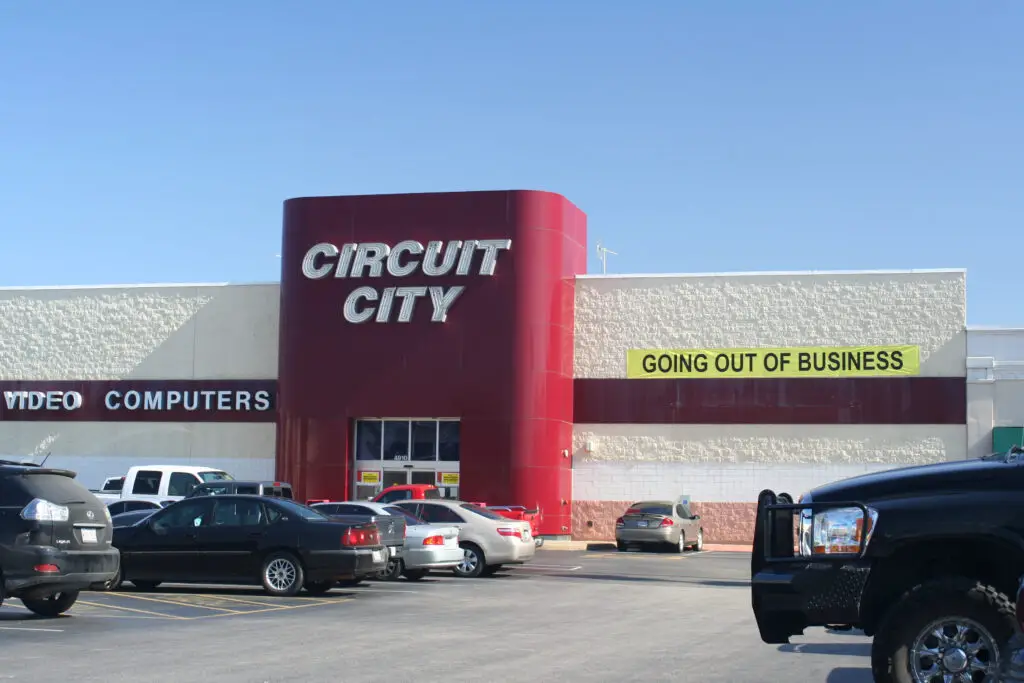
Circuit City was a tech lover’s paradise, offering a wide range of electronics from TVs and computers to sound systems and cameras. For many, it was the go-to store for all things tech in the ’90s and early 2000s. The company’s extensive inventory, knowledgeable staff, and competitive prices made it a top contender in the electronics market. But as online shopping became more popular and big-box retailers like Best Buy expanded their reach, Circuit City struggled to maintain its footing. The brand was unable to adapt quickly enough to the changing landscape, and after years of financial troubles, it closed its doors. Despite this, Circuit City still holds a special place in the hearts of those who remember shopping there.
In the current climate, where tech is at the forefront of everyday life, Circuit City could easily make a comeback by embracing the online shopping trend while also revamping its brick-and-mortar stores. With the right combination of innovative products, expert advice, and competitive pricing, Circuit City could once again become a go-to destination for tech enthusiasts says Fox Business. Imagine a Circuit City that offers personalized shopping experiences, hands-on demos of the latest gadgets, and exclusive online deals. A focus on high-quality customer service and the brand’s reputation for cutting-edge products could give Circuit City the boost it needs to win over a new generation of tech-savvy consumers.
7. Sharper Image: A Gadget Lover’s Dream

Sharper Image was known for its cutting-edge, innovative gadgets that seemed straight out of a sci-fi movie. From sleek electronics to bizarre novelty items, the brand became synonymous with futuristic technology and unique gift ideas. It was the kind of store where you could find everything from a massage chair to a flying drone, and the excitement of discovering something new and unique was part of the experience. However, as e-commerce took over and competitors emerged, Sharper Image struggled to maintain its charm. The brand became a victim of its own success, with many of its products getting copied and sold by cheaper alternatives. Despite its decline, Sharper Image still has a dedicated fan base.
With the rise of gadget culture and a renewed interest in all things innovative, Sharper Image could easily make a comeback. Imagine a store filled with the latest tech trends, from smart home devices to advanced wearables, all under one roof. Sharper Image could tap into the growing fascination with the future by offering cutting-edge products and an immersive in-store experience. The brand could also capitalize on e-commerce by offering exclusive online deals, bundles, or subscription boxes featuring the latest gadgets. With the right focus on innovation and a dash of nostalgia, Sharper Image could reclaim its place as the ultimate destination for the gadget-obsessed.
8. Borders: The Bookstore Experience
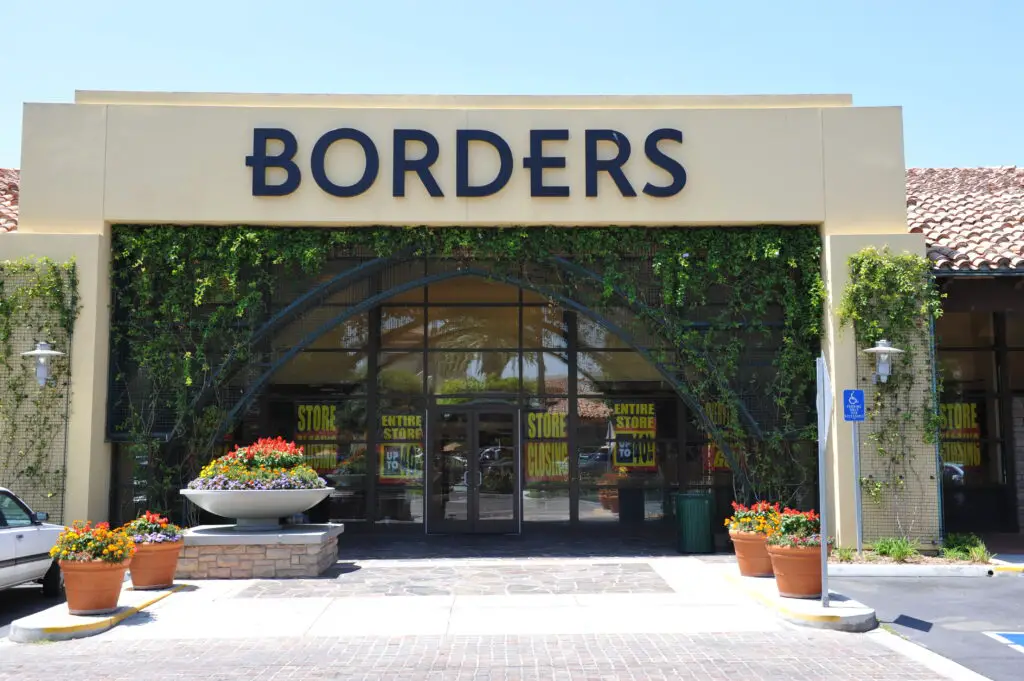
Borders was once a beloved bookstore chain, offering a vast selection of books, magazines, and music. For many people, it was the perfect place to spend an afternoon browsing through shelves, picking up the latest bestsellers, and relaxing with a cup of coffee at the in-store café. The company’s wide range of products and its inviting atmosphere made it a popular destination for book lovers. However, the rise of online bookstores and e-readers led to the brand’s downfall, as customers turned to digital options for their reading needs. Despite its closure, Borders still evokes strong feelings of nostalgia in those who remember it fondly.
In today’s world, where bookstores are making a comeback as community hubs, Borders could find success again by offering a unique and immersive experience. Imagine a store that combines physical books with modern technology, allowing customers to browse digital titles while still enjoying the tactile experience of holding a book. Borders could also expand its offerings to include events like book clubs, author signings, and literary workshops. With a renewed focus on building a sense of community and fostering a love for reading, Borders could create a destination that’s about more than just books. By blending the past and present, Borders could easily reclaim its place as a cultural landmark for readers.
9. Kmart: The Discount Giant
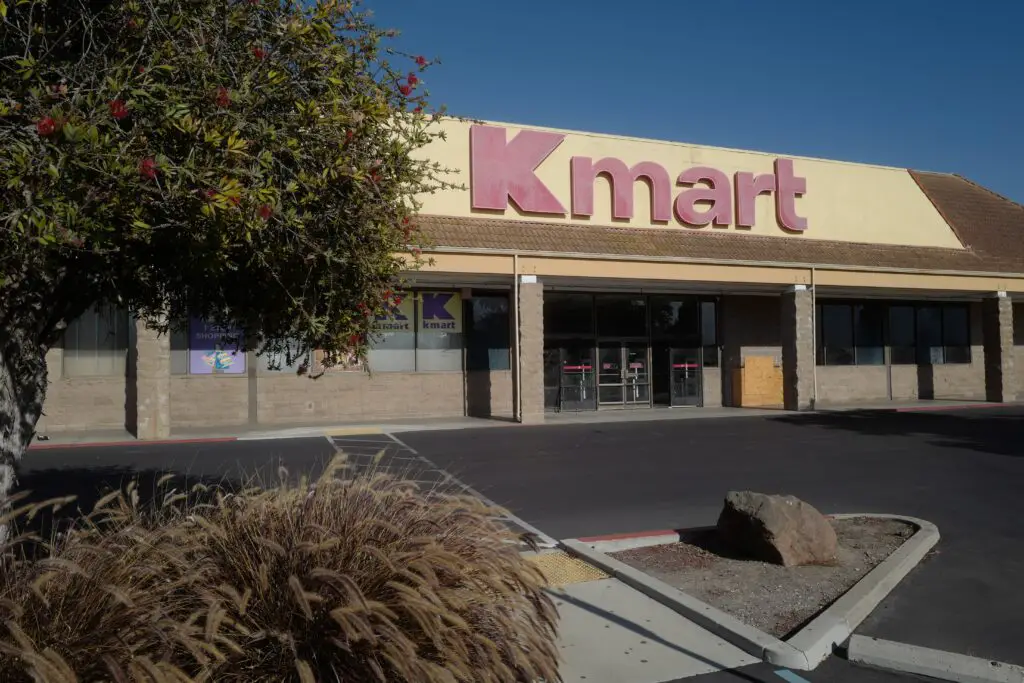
Kmart was once a major player in the discount retail world, offering affordable clothing, home goods, and electronics to shoppers on a budget. With its wide selection and low prices, Kmart attracted a loyal customer base, and its iconic blue light specials became a hallmark of the brand. However, as competitors like Walmart and Target grew, Kmart struggled to keep up. Its stores began to decline, and the brand became less relevant in a rapidly changing retail landscape. Despite its struggles, Kmart still has the potential for a resurgence.
In today’s market, where consumers are looking for affordable yet quality products, Kmart could make a comeback by focusing on its strengths. The brand could emphasize its value proposition, offering competitive pricing and exclusive product lines. Kmart could also focus on enhancing its in-store experience, offering unique events or promotions that attract customers back into stores. With the right marketing strategy and a focus on customer loyalty, Kmart could reclaim its place as the go-to destination for budget-conscious shoppers.
10. Woolworths: A Step Back in Time
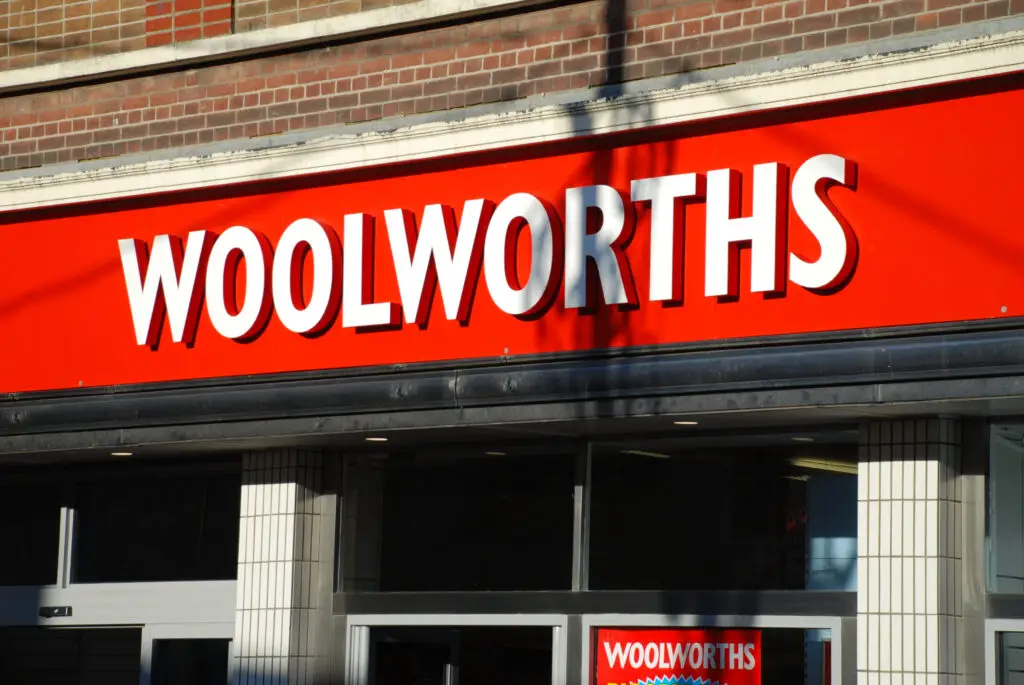
Woolworths, once a popular variety store, was a household name for decades, offering everything from toys and clothing to household items. For many, it was the go-to place for affordable goods, and the brand became synonymous with everyday shopping. However, as the retail landscape evolved, Woolworths struggled to compete with bigger, more specialized retailers. In the face of growing competition and changing shopping habits, the brand faded from the scene. But despite its decline, Woolworths has a special place in the hearts of those who remember its heyday.
With the right focus on nostalgic appeal and the growing trend of vintage and retro shopping, Woolworths could make a comeback. Imagine a modern-day Woolworths that combines the best of the past with a fresh perspective. The brand could offer a curated selection of affordable, high-quality products while tapping into the retro appeal that has gained traction in recent years. By focusing on creating a unique shopping experience that blends nostalgia with modern-day convenience, Woolworths could become a go-to destination for those who want to relive the good old days while shopping for something new.
11. Palm: The Lost Smartphone Pioneer

Before the iPhone revolutionized the smartphone world, Palm was a pioneer in personal digital assistants (PDAs) and smartphones. The Palm Pilot, released in the late ’90s, became a must-have device for professionals and tech enthusiasts. The Palm Treo, an early smartphone, was ahead of its time with its combination of phone, email, and internet capabilities. Palm’s innovative technology made it a household name for a while, but the brand failed to keep up with the rapid advances in smartphone technology. When the iPhone debuted, Palm’s market share quickly evaporated.
Despite its decline, Palm’s legacy in the smartphone world remains. With the rise of minimalist and retro tech trends, Palm could make a comeback by embracing its roots and offering a modern take on the PDA or smartphone. A new Palm device could cater to those looking for a simple, distraction-free phone that focuses on the essentials. With a sleek design and advanced functionality, Palm could appeal to a niche market of users who want something different from the overwhelming features of today’s smartphones. By staying true to its original vision and adapting to modern needs, Palm could easily find a place in the current tech landscape.
12. Le Tigre: The Preppy Icon
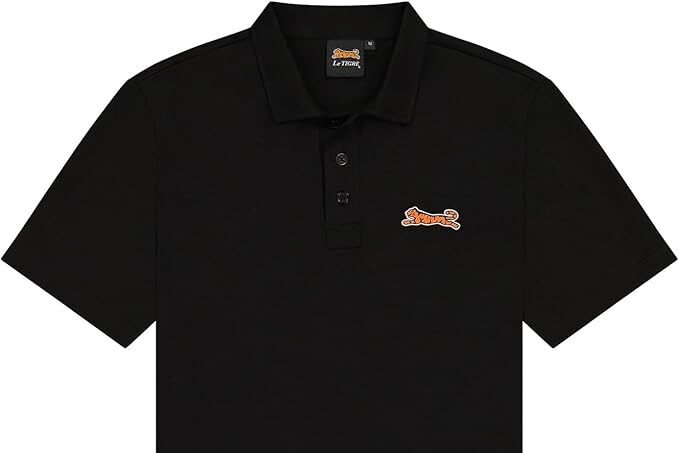
Le Tigre was the quintessential preppy brand of the ’80s and ’90s, known for its colorful polo shirts and signature tiger logo. It became a favorite among tennis players, athletes, and anyone looking to embrace a sporty, polished style. The brand’s laid-back, yet refined aesthetic made it a staple in many wardrobes. However, as fashion trends changed, Le Tigre slowly faded from the spotlight. Despite this, the brand’s preppy charm still has a loyal following.
In today’s fashion landscape, where nostalgia and retro styles are making a comeback, Le Tigre could easily regain its place as a preppy icon. The brand could tap into the growing interest in vintage clothing by re-releasing some of its classic pieces, updated for the modern fashion scene. Think colorful polos, sporty jackets, and accessories that evoke the brand’s signature style. By focusing on its heritage while incorporating contemporary trends, Le Tigre could reclaim its position as a go-to brand for anyone looking to add a touch of preppy cool to their wardrobe.
13. American Apparel: The Vintage Rebirth
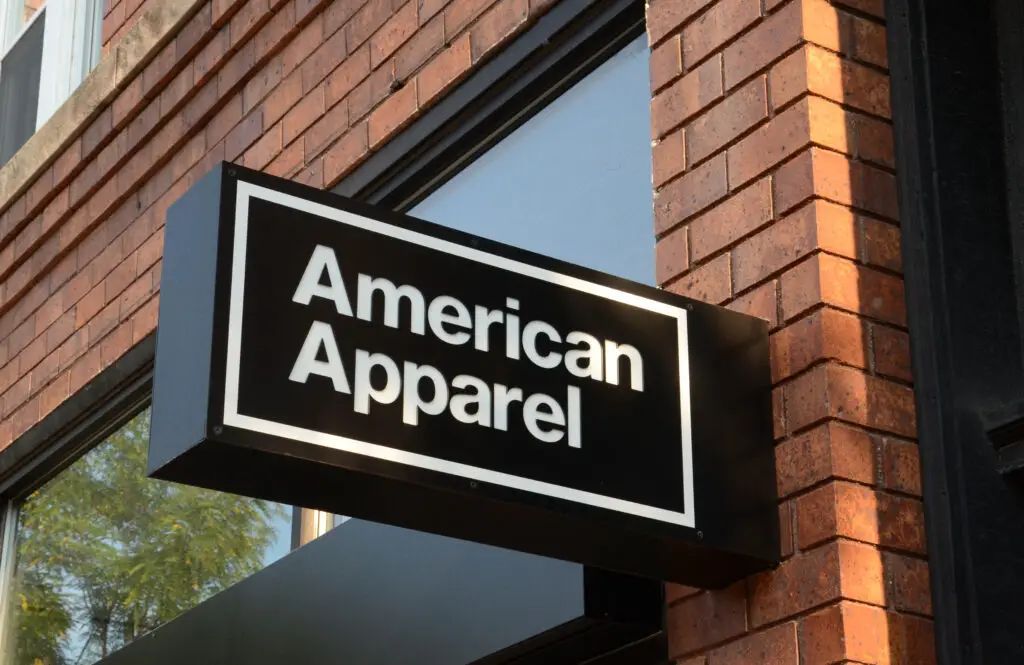
American Apparel was known for its bold, retro-inspired clothing that embraced a minimalist aesthetic. The brand gained a cult following in the 2000s for its basic, high-quality pieces and its commitment to producing everything in the USA. It became a favorite among fashion-forward individuals who appreciated the brand’s commitment to ethical production and its minimalist approach to fashion. However, after facing financial troubles and a shift in consumer preferences, American Apparel fell out of favor.
There’s still a strong demand for vintage-inspired fashion, and American Apparel could easily tap into this trend. By focusing on its roots and offering high-quality, ethically made basics, the brand could attract a new generation of shoppers who care about sustainability and style. Imagine a revitalized American Apparel with a fresh take on its iconic pieces, now reimagined for the modern era. With the right marketing and an emphasis on eco-friendly practices, American Apparel could stage a successful comeback in the world of fashion.
